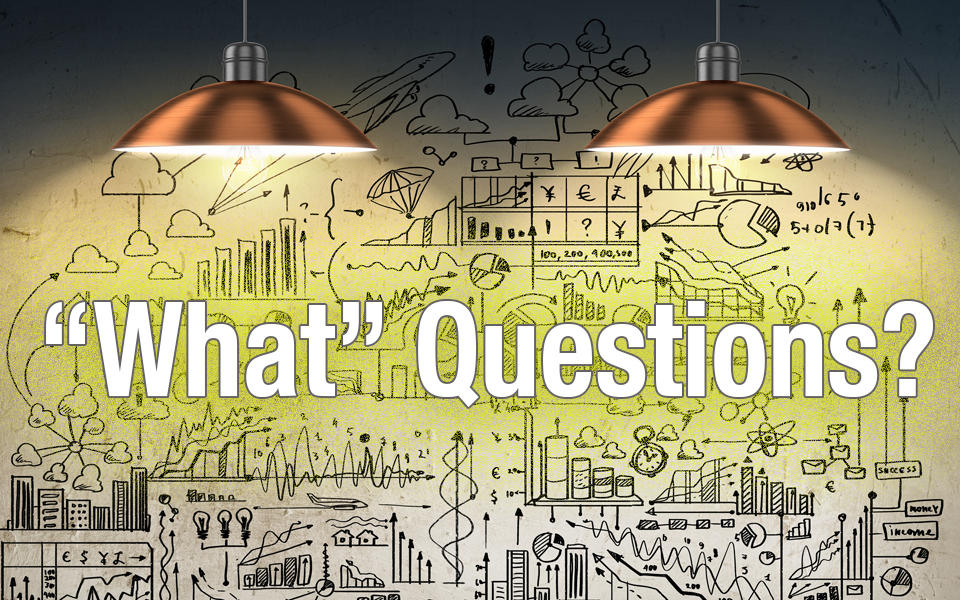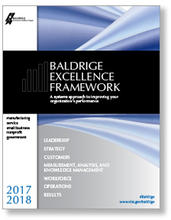Blogrige
The Official Baldrige Blog

I am reminded of the old Abbott and Costello routine, "Who's on First." In the routine, who's on first is a declarative statement, not a question: Who is the name of the first baseman. In the same vein, in my title for this blog what provides clarity is a declarative statement, not a question. Let me explain.
I recently read a book review by Mike Richman of the book, Clarity First, by Karen Martin. The thesis of the book is that clarity of purpose, priorities, process, performance, and problem solving are the foundation of exceptional organizational performance. Without this clarity there is ambiguity in the organization. And ambiguity leads to employee disengagement and frustration, dissatisfied customers, poor or no goal setting, and inefficient and ineffective operations. While ambiguity causes problems, it can also cause an inappropriate level of comfort when there is fear of change rather than an environment that embraces change. Clarity provides focus for desired or needed change and establishes the basis for making change happen.
Role of the "What" Questions
The review and the content of the book reminded me of the importance and role of the "what" questions in the Baldrige Criteria process items. What provides clarity. While most process-related questions begin with the word "how" and seek process details, a few begin with the word "what" and seek context-setting information. This context provides the clarity to guide organizational priorities, processes, change management, and employee, supplier, and stakeholder involvement. In addition to "what" questions in the basic organizational description contained in the Organizational Profile, some of those "what" questions are:
- What are your key strategic opportunities?
- What are your key work systems (the mechanisms for accomplishing the work of the organization)?
- What are your organization's key strategic objectives and timetable for achieving them?
- What are your key workforce plans to support your short- and longer-term strategic objectives and action plans?
The answers to these questions provide the organizational clarity that allows the organization to make progress, allows the organization to successfully execute change processes, allows the people of the organization to see how they can contribute to its future, and therefore allows the organization to strive toward its vision.
Evaluating the "What" Question Responses
How do you evaluate the responses to these what questions? Both organizations using the Criteria and Baldrige examiners assessing an application from an organization should use the answers to these questions to look for organizational alignment and integration. Do the answers provide clarity or ambiguity? Do the answers present a holistic image of the organization's priorities and direction or do they represent misalignment and a picture of a chaotic organization? Furthermore, do the answers to the "How" process questions align with the priorities and directions set in the answers to the "What" questions?
All the process specificity in the world is meaningless if the processes do not align with priorities and direction. Take for example the photographic film industry. All the processes for making exceptional black and white film, did not help meet the challenges of the digital revolution. Companies that saw the opportunities in digital photography, set strategic objectives to be at the forefront and had people plans that would give them the skills to embrace digital transformation. Those companies survived the chaos that plagued the companies that kept their focus on making outstanding and ever improving film products.
Answering the "What" Questions in Your Organization
How well does your organization answer the "What" questions? If well, how well do you align your processes to the answers to the "what" questions? Is there clarity in your organization?
A Systems Approach to Improving Your Organization’s Performance

Baldrige Excellence Framework
The Baldrige Excellence Framework has empowered organizations to accomplish their missions, improve results, and become more competitive. It includes the Criteria for Performance Excellence, core values and concepts, and guidelines for evaluating your processes and results.
Purchase your copy today!
Available versions: Business/Nonprofit, Education, and Health Care
About the author
Related Posts
Comments
Wooooooow! You fired me up and am so excited about this because there is way you colored off my eyes concerning issue. Am in Africa, Uganda and am planning and same time the plan is undergo but still struggling with structure. And I have taken your advice, thank you so much. You're blessed.






Thank you for this insightful article emphasizing the importance and the role of "What" questions in the criteria.